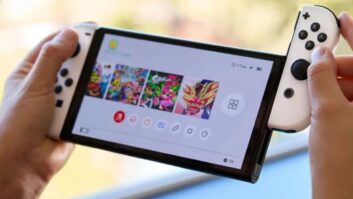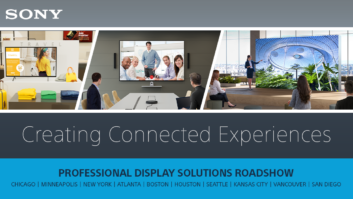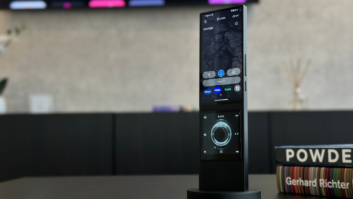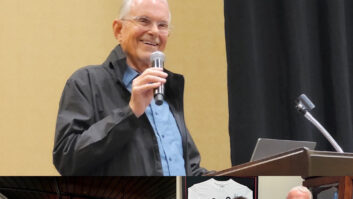NEW YORK — When the Windows 10 operating system officially launches next year, consumers won’t be the only ones eager to give it a go.
The accessory manufacturers TWICE spoke with are expectantly waiting to see how the OS shakes out and what it will mean for their businesses. As many may recall, the touchscreen-focused Windows 8 OS proved to be a steep learning curve for scores of consumers, one that some CE accessory makers tried to ease with devices featuring built-in touchpads. Unfortunately, these products “seemed interesting at the time,” said Stephen Baker, NPD Group industry analysis VP, “but, ultimately, have fallen flat as consumers who buy a non-touch Windows notebook just don’t want touch, so they aren’t all that interested in peripherals that can add that capability.”
Added Baker, “Consumers don’t consider the OS when buying a peripheral — they consider the need of what goes along with the PC that they need to improve their experience, or, increasingly, they may use it as a point in time to upgrade the peripherals they have and have likely used for a while.”
This go around, Microsoft has acknowledged the touch naysayers and its OS roots, bringing back the Start Menu while making its Charms more mouse-friendly.
Although the new OS likely won’t spur strong sales of computer accessories, it certainly won’t hurt, said Baker. “Anything that improves PC sales is likely to improve peripheral sales, and anything that returns the focus of a Windows PC to mouse/keyboard and away from touch can’t help but be a boon the peripherals industry.”
TWICE questioned two accessory manufacturing execs — Satechi CEO Alan Turksu and Rapoo marketing manager Peter Waltman — to gather their thoughts on Windows 10 and what it could mean for the CE market. What follows are their emailed responses.
TWICE: Are you currently developing any accessories that are designed with specific Windows 10 features in mind?
Peter Waltman, Rapoo: We are currently studying the Windows 10 technical preview, which focuses on handling standard mouse and keyboard input as well as touch input. It’s our priority to ensure our current product range will be compatible with Windows 10. That means updating drivers and software.
Right now, we don’t foresee additional accessories; however, we will update our current collection, which includes mice, keyboards and touchpads, and their drivers, for optimal performance with Windows 10.
Alan Turksu, Satechi: Yes. Actually, our Bluetooth Wireless Smart Keyboard, which is currently available, is compatible with Windows 10 already. We’re looking into adding additional Windows 10-specific functions, such as the Snap function and activating Cortana.
TWICE:We all know that the touchscreen interface of Windows 8 was a bit hard to swallow for many consumers. Some accessory manufacturers tried to bridge the gap by launching products with built-in touchpads for easier swiping. Do you think this will happen again?
Waltman: Windows 8 mainly focused on touch users, but it appears that Windows 10 is trying to strike a balance between different user demands. The “intuitive gestures” for touchscreens can be difficult to learn although they are very efficient once you can control them. Our research showed that Windows touchpad users mainly use the basic mouse functions on their touchpads: click, double-click and scroll.
Windows 10 is bringing back some features that will make it easier to operate by users who are familiar with these functions, like the revival of the Start Menu. Therefore, we are not expecting any really new Windows 10 accessories, only existing products stamped with “Windows 10 compatible” or “designed for Windows 10.”
To reiterate, this is only based on what we know about Windows 10 now. Microsoft might have some surprises up its sleeve.
TWICE: Do you think consumers pay much attention to their current OS when shopping for PC accessories?
Waltman: Most consumers do not typically consider their OS when shopping for PC accessories. Instead, they are looking for something special about form or features. They simply expect the product to work with their OS, which makes sense. Now, if you’re talking about certain new features in an OS that require specific accessories, that’s a different story — for example, the touch functions in Window 8.
Turksu: We’ve noticed a trend for more compatibility with operating systems. With consumers becoming more and more tech savvy, it’s important to them to ensure compatibility with their current or future operating system. That’s why we strive to maintain full usability over as wide a range of operating systems as possible.
TWICE: Are you finding consumers to be interested in PC accessories that also work with tablets and mobile devices?
Waltman: Absolutely. Most consumers own multiple devices, and purchasing accessories that only work with a specific product is no longer feasible. No one wants to carry around multiple accessories, and the convenience of a one-accessory-fits-all is appealing. For example, most customers would look for a keyboard with touchpad that is not only compatible with his or her PC, but the tablet or smart TV, too. Bluetooth provides excellent opportunities for that because there’s no need for an extra receiver.
Turksu: Yes. In fact, that’s why we created the Bluetooth Wireless Smart Keyboard. Our new keyboard can sync with up to five devices and is compatible with desktop computers, laptops, tablets and smartphones, including Android and iOS. Since customers are using their mobile devices for more than just phone calls, we want to make sure we can help them accomplish all their tasks from any device.
TWICE: Are you expecting a surge in PC accessory sales following the Windows 10 launch?
Waltman: The hardware requirements for Windows 10 are the same as Windows 8. You need a processor of at least 1GHz, supporting PAE, NX and SSE2. Regarding memory, you’ll need at least 1GB for the 32-bit version, or 2GB for the 64-bit version. So I do not think this will boost PC or tablet sales substantially, perhaps a small increase only because something new (like an OS) can draw attention. Additionally, I only expect a small rise in sales for the accessories (like mice, keyboards, and touchpads).
Turksu: No, I don’t think so. I think customers will need to try out Windows 10 before they leave the current operating systems that they’re already comfortable using.
TWICE: What are your impressions of the Windows 10 OS?
Turksu: So far, I like it for several reasons — one is that they’re asking for comments from the public, which is good because it will create a more user-friendly products. It also is bridging the gap between Windows 7 and 8. Based on what I’ve seen thus far, I think it’s something that we will implement.
Waltman: The Windows 10 looks promising although it is still in its early stages. … Windows 10 focuses on handling standard mouse and keyboard input as well as touch input to be used with multiple devices from smartphones to servers. It will switch modes depending on how it is being used. Many people, including myself, will be happy to learn that the Start Menu is back. It is the default if you use a keyboard and mouse; but, you can keep the full-screen Start screen if you prefer it.
The new Task View button on the taskbar helps Window users who do not know the Alt Tab function which move windows. The Charms have been made more mouse-friendly, and you can now use familiar keyboard shortcuts to perform actions. The Action Center notifications also look promising. Overall a lot of productivity improvements, although die-hard touch fans might feel a little disappointed.













